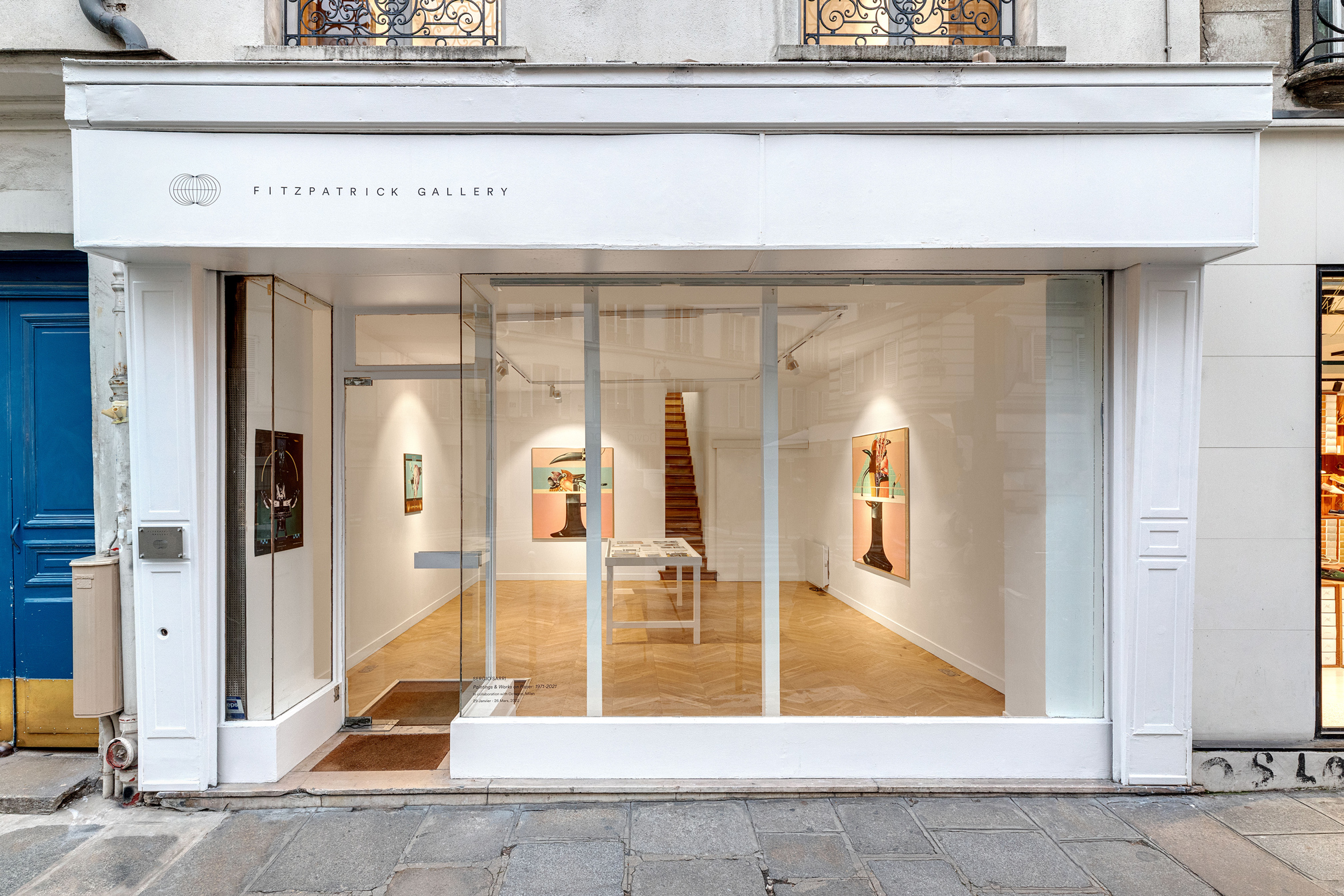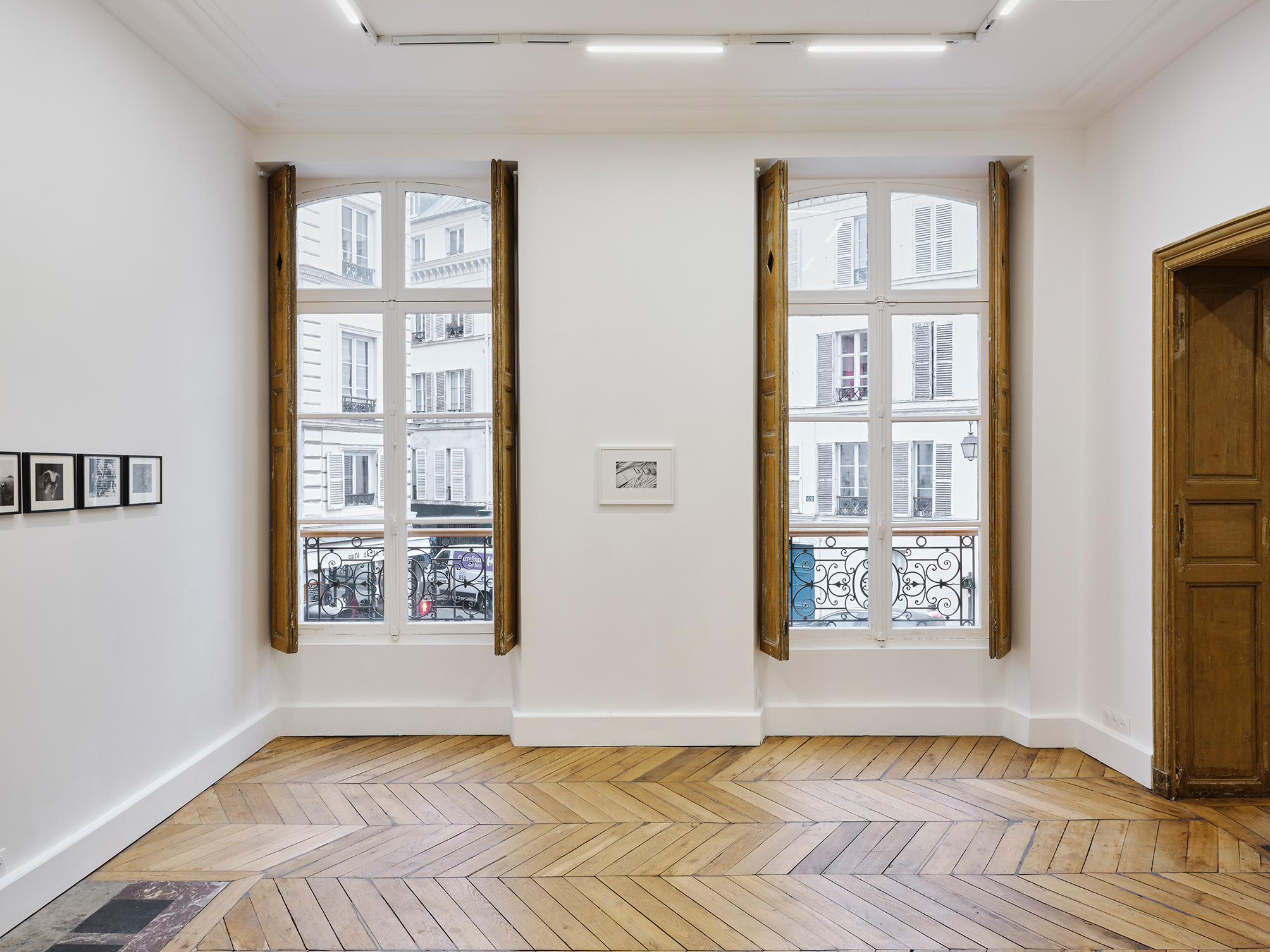Robbie Fitzpatrick (on Basel Social Club)
We sat down with Robbie Fitzpatrick, co-founder of the Fitzpatrick Gallery and initiator of the Basel Social Club
A true citizen of the world, Robbie Fitzpatrick made his name as a gallerist – along former business partner Alex Freedman – by bringing his own international taste, albeit exquisitely Europe-oriented, to the United States with the first instalment of his gallery in Los Angeles ten years ago. His program feels as contemporary as contemporary art gets, even when he brings back to light older artists who are best understood today—Turin painter Sergio Sarri is but one example. Starting off in LA but influenced by countless other places that have left a mark on his international life, Fitzpatrick now operates in Paris [Here is the gallery’s website, Ed.] in a beautifully renovated multi-storey maison cum window in the Marais neighbourhood. (We learned that the unfolding architecture of his current gallery has allowed for the storytelling he seeks in exhibitions, his soft spot for narrative in art.) His last efforts with the Basel Social Club, an alternative experience to art fairs when and where they most typically happen, i.e. Art Basel in Basel, is the last of Fitzpatrick’s efforts in the gallery business.

What’s your background?
My mother is Japanese and my father is American. My father worked as a diplomat for the US Foreign Service, so I moved around a lot as a child, every three to four years. I was born in Tokyo, and lived in New Zealand, Washington DC, Vienna, Florence, and New York. I later moved to Berlin, Los Angeles and eventually Paris, where I currently live. Surely this nomadic childhood contributed to my seeming incapacity to stay put in any one place for longer than a few years, which remains true to this day.
Do you remember your first experience with art?
From a very young age I felt a close affinity to everything artistic, but it’s probably my Japanese grandmother, a very talented artisan skilled in wood-block printmaking, calligraphy, knitwear, and other crafts, who taught me a deeper appreciation for art. My childhood homes were full of her artistic creations, and it was this close proximity to art that certainly had an influence in my future career as a gallerist.

What did you study and how did you decide to get into the gallery business?
I studied in New York City in a program at NYU where I could design my own curriculum. While I was always a creative kid, I didn’t necessarily want to pursue a career as an artist, but rather imagined working closely with artists. I chose subjects that would create a foundational basis for running a gallery: art history of course, but also studio art classes, art theory, art management, sort of my own undergraduate curatorial studies program. Shortly after graduating I worked in a few different places in New York – Performa and Anton Kern Gallery among them – and eventually decided to leave New York for Berlin. Shortly after my relocation the 2008 financial crisis happened, and a lot of my friends had lost their jobs. I felt quite lucky to be in Berlin, an affordable place to live back then. I immediately started working for Tanya Leighton, who had opened her gallery just a few weeks before my arrival to Berlin. I was her right hand and eventually became the director of the gallery, shaping the program with her. I then met Alex Freedman, who would become my business partner for the first iteration of my own gallery. She’s originally from Los Angeles, and the reason we opened the gallery together there.
How well did you know Los Angeles?
Before moving there I had only been to LA once prior when I was 20. I hated it. At the time I was living in New York, and in those days there was still a general animosity that most New Yorkers felt for LA. I moved there the day before New Year’s Eve–was picked up at LAX and shuttled straight to the Mojave Desert. I immediately understood the appeal of LA, after five gruesome Berlin winters, and dove head first into the deep-end of californication. We opened the gallery a few months later with three subsequent group exhibitions, which became a sort of trilogy and helped us to better understand the program we wanted to present in LA. I still work with the four artists from our original roster: Mathis Altman, Matthew Lutz-Kinoy, Lucie Stahl and Hannah Weinberger.

How did the Los Angeles audience react?
We were very well received, maybe not by the entire local art scene, but for sure by a committed audience who appreciated the fact that we were showing artists from Europe. We initiated an independent art fair, a project called Paramount Ranch, which featured young galleries and project spaces from the US, Europe, and elsewhere. It took place in a former film set, a pioneer town for cowboy westerns previously owned by Paramount Pictures: the kind of project that could only happen in Los Angeles. At the time the city still felt like it was at the edge of the world. Most galleries there were picking up artists from the local art schools, so what we were doing as a younger gallery, an import strategy, was definitely different. A lot of the galleries were still in Culver City back then, but we felt a closer affinity to Hollywood. Our first location was in the corner of a rundown strip mall on Hollywood Boulevard next to a Domino’s Pizza and a smoke shop called Hollywood Smokes.
And now Paris.
After operating for five years in LA, with a very Euro-centric program, Alex and I decided to seize on the opportunity to open an outpost in Paris. I moved here in 2018 to oversee the expansion, and at the same time convinced my friend Tenzing Barshee to move into an apartment I found, to co-run a space called Sundogs. A few years later Alex eventually decided to leave the gallery, enrolling in one of the most prestigious business schools in the US. I chose to quietly pause our gallery operation, and we gave up the lease of both spaces in Los Angeles and Paris. My timing was fortuitous, as a few months later, the pandemic began: everyone was forced to take a break. That was the perfect time for me to evaluate my next steps. I chose to stay in Paris, find a new location, and re-launch the gallery on my own, as Fitzpatrick Gallery.

How would you describe your current program?
It is still very much an extension of the previous gallery. We still work with most of the same artists, slowly adding more. I continue to be interested in establishing this dialogue between Europe and the US because that’s a reflection of my own identity. I’m an American who has lived most of my life outside of the United States, especially in Europe. Beyond that, I’m really interested in storytelling as an exhibition model. The architectural layout of my current gallery space facilitates a kind of narrative reading of an exhibition: a progression of separate rooms that unfolds like chapters from a story.
What does artist representation mean to you?
It has always started with a solo exhibition. That’s where you understand whether you want to start a relationship, a commitment with each other based on deep trust. The decision is mutual. Sometimes a show doesn’t result in representation because I feel I am not the right gallery for that particular artist. They might require something I can’t offer, whether that’s a bigger structure, production capacity, mediation, etc. You can’t represent too many artists either, if you want to do it properly.

Of all the ways a gallery can support its artists, which one do you enjoy the most?
There’s of course nothing comparable to the gratifying feeling of telling an artist that their work has sold, but I’ve had the fortune of being able to inform my artists of other great news, whether that’s an invitation to an institutional show or the inclusion in a Biennale, and that’s when my job as a gallerist feels the most rewarding.
What’s your take on art fairs?
When Alex and I started the gallery we realized how important it was to get into the fair system, and we were lucky enough to be accepted early on into some of the most prestigious fairs: Frieze, Art Basel, etc. Participating in fairs was the only way we were going to survive as a gallery–where we could meet certain collectors, and get our name out into the world beyond our little Hollywood stripmall. At one point we were doing seven or eight fairs a year, the number of fairs outpaced gallery shows. While I still recognize the importance of participating in fairs, I’m trying to limit the number of fairs to four a year, and am generally more interested in alternative models like yours [CFAlive. Ed.], offsite projects, and collaborative initiatives.
Can you tell more about the project you initiated last year in Basel, called Basel Social Club?
The project was initiated a year ago, shortly after covid – a period of rest and isolation, which reminded us of the need for social engagement that was absent during the confinement, while providing an opportunity for us to learn to slow down. Now that we’ve returned to normalcy, however, it’s as if we learnt nothing from that comforting period of quiet solitude, ramping up the number of fairs, with a more accelerationist pace than before. Gallerists are exhausted, and collectors seem to be overwhelmed by the number of fairs themselves. The Basel Social Club responds to this situation, providing an alternative model for engaging with art. For starters, it’s not an art fair, but a social experience, with a restaurant, multiple bars, and plenty of space for people to interact with one another, outside of the conventional art fair setting.
Last year the Basel Social Club took place in a villa with a garden and a pool. This year we have secured a great new location in a former mayo factory, 10 minutes walk from Art Basel–a massive playground for visitors to explore, interact with art, and engage with one another in an alternative space.
September 22, 2023
